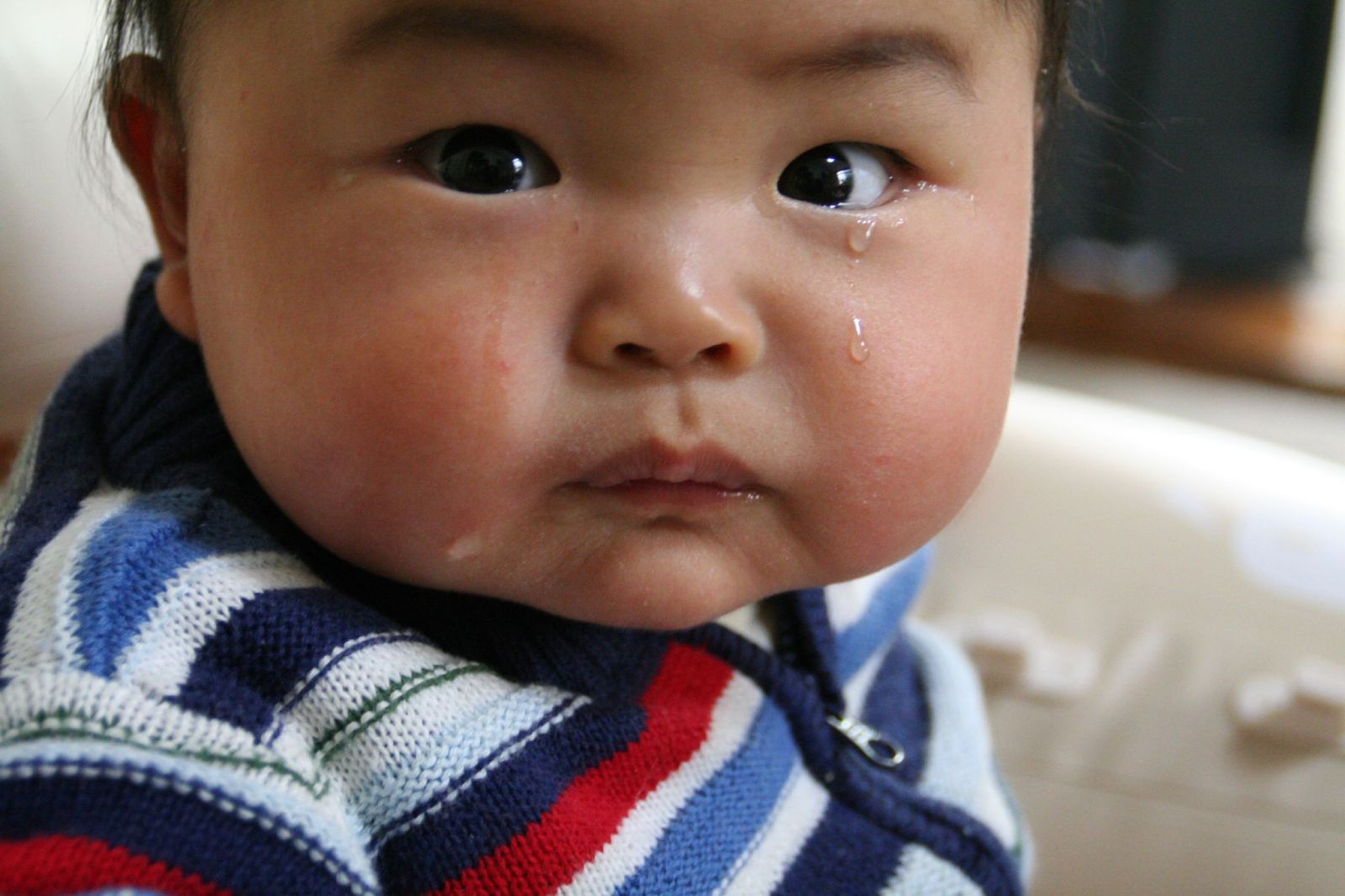Can babies feel pain?
Interview with
Historically, opinions on whether babies can feel pain have been divided, with  some arguing that the newborn brain is far too immature to consciously process sensations of discomfort. But because babies can't communicate their feelings, this has been a hard nut to crack. Now, with the help of some willing parents, a brain scanner and a device that delivers a sensation a bit like being poked with a pencil, Oxford University's Rebeccah Slater reckons she's a step closer to the answer, as she explained to Chris Smith...
some arguing that the newborn brain is far too immature to consciously process sensations of discomfort. But because babies can't communicate their feelings, this has been a hard nut to crack. Now, with the help of some willing parents, a brain scanner and a device that delivers a sensation a bit like being poked with a pencil, Oxford University's Rebeccah Slater reckons she's a step closer to the answer, as she explained to Chris Smith...
Rebeccah - Lots of parents say, isn't it just obvious that babies feel pain, but actually, it's more complicated because the main way that babies communicate is by crying or facial grimacing. But of course, they'll do that whether they're hungry or whether they're cold, or whether they're in pain. So, just because a baby is crying, it doesn't necessarily tell you whether they're experiencing pain. So in fact, it used to be thought that babies didn't experience pain and that most of the responses that you could see were just reflexes.
Chris - This is the reason why historically, there are case reports of babies undergoing in some cases, quite significant surgery without really any proper anaesthesia.
Rebeccah - That's right. So, because it was thought that babies couldn't experience pain and people were very worried about the side effects of things like anaesthesia, they tended not to provide the amount of pain relief that would be given to adults or even older children.
Chris - So, how did you try and probe this to find out what was really the experience of an infant when it was subject to a painful stimulus?
Rebeccah - We used functional magnetic resonance imaging in order to look at the brain regions that are activated when a stimulus is applied to the baby that an adult would describe as mildly painful. We made an assumption here, but because we know the areas of the brain that are active in an adult, that if we saw the same areas of the brain active in a baby then we could assume that their baby might be having some of the experiences that an adult would have. This is particularly interesting because not only is pain a sensory experience and by that, I mean, where on the body it happened or how intense the stimulus is. It's also an emotional experience related to unpleasantness. And so, we wanted to see if some of the brain regions that were involved in the more emotional side of the experience might also be active in a baby.
Chris - What did you find? Were they?
Rebeccah - They were. 18 of the 20 brain regions that are active in the adult were also active in the baby, suggesting that babies do have the capacity to experience pain in a similar way to adults.
Chris - Brain scanners are not noiseless comforting kind of relaxing environments in which to exist. I've been in one. How do you dissect away the effect of being disentangled from a parent, prodded and then strapped down in a scanner, away from any signals of pain physically applied by you to these infants?
Rebeccah - So in adults, very confounded by lots of these things that you've just describe such as the anticipation and perhaps even, some people might find it a little bit claustrophobic. But in a baby, they really don't have very much sense of their environment outside their immediate zone. So, if they are carefully wrapped and protected by the mum and often put to sleep by the mum, I don't think they're actually aware that they're going into the actual scanning environment.
Chris - You found that of 20 regions which are routinely active in an adult brain that's experiencing a painful stimulus, 18 were active in the baby. What about the two that are missing then?
Rebeccah - One of them is called the orbitofrontal cortex and that's part of the brain that's involved in processing decision making and sort of helps us with what we're going to do with the information. The other one is called the amygdala and quite often, this is associated with fear. One of the reasons why these areas might not be active in a baby is that they don't yet have the capacity to have a rationale decision about all of the experiences that they're having. It might be a little bit less developed than some other senses because in the womb, babies really aren't exposed to any pain. So, there would be no need for these complex responses to be developed in a sensory environment where you're very protected.
Chris - When do you think these circuits actually begin to switch on?
Rebeccah - So, at the moment, the study that we've been doing has been done in healthy term babies. However, some previous work that we've done, we've used EEG and this is where you can look at the electrical activity in the brain. What we found is that it's not until about 35 weeks gestation where they can actually have a discriminative brain pattern between tactile stimulus - so if you were touched - versus something painful. Prior to that time, the activity in the brain seems to be very similar regardless of whether you're having a painful or a non-painful event happening to you.










Comments
Add a comment